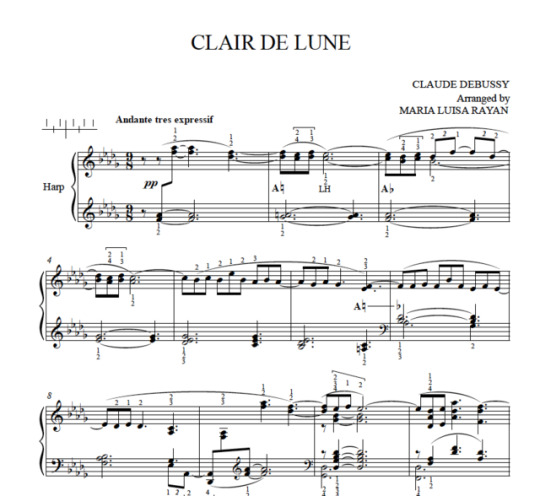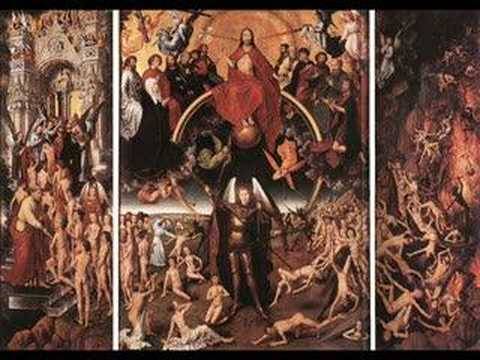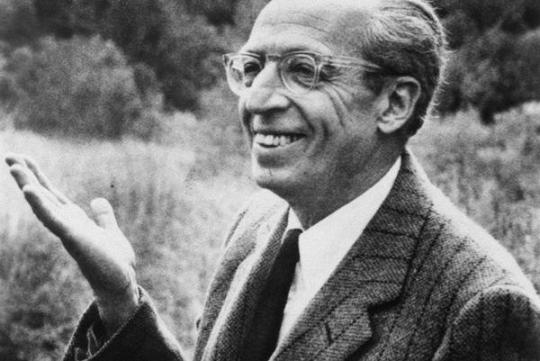Don't wanna be here? Send us removal request.
Text
“Hallelujah Chorus”
“Hallelujah Chorus”
The “Hallelujah Chorus” was written in 1741 by George Frideric Handel and it a three minute and thirty seven second piece.. This song is very well now to so many people around the world, especially around christmas time. King George the second was so impressed with this song that he stood up at the end of the first performance in London. And when the king stood, everyone else stood too. This action by King George started a tradition this still happening today. As you listen to the hallelujah chorus really notice how detailed Handel has placed each word from rhythmic emphasis. Hallelujah in the piece is written is a very pleasant way. The phrase “And he shall reign forever and ever,” are really important words and land on very important beasts and parts of the song. The song started off very soft, and then the chorus comes in and sings “Hallelujah” five times, and then five more time in a different pitch. The chorus starts to sing different lyrics and is followed by more “hallelujahs.” The chorus tone changes each time but is always followed by hallelujah. Soon the sopranos sing with the chorus and it is a very high pitch part of the song. Tenors and brasses beiginnign to ings which makes a deeper tone the the lyrics, but are also singing with sopranos and altos, but singing to different parts. More lyrics come into the songs and many people are signing bringing different tones into the song. All singers have different pitches. “Hallelujah is always said in the song. The piece ends with on final and long hallelujah.
0 notes
Text
“The Stars and Stripes Forever”
“The Stars and Stripes forever”
“Then Stars and Stripes forever” was written by John Philip Sousa in 1896. When thinking of the idea of the song he was on a ship returning from Europe. After reaching his destination he wrote it down verbatim on the shore. This march it like the traditional march form but is missing a break or dogfight before going back to the main melody. This is a famous march also known for its detailed counter melody played with a piccolo instrument. Many people think the melody is very simple, it is not. It includes two sections that are each sixteen measures long, and they are further made into four smaller parts of the piece. At the beginning of the piece the march starts with a couple introductory measures. Measures are a group of beats marked as a separate unit of music. Syncopation is included in the melody for the first strain and includes brasses and a drum roll. The second strain begins and the melody is mor3e energetic and faster then the first. Fifty eight seconds into it the trip begins and the music's becomes softer. “Dogfight” plays and includes low brasses played repeated notes. The trio repeats gain but played by the piccolo and it is a very sweet and softer sound. Dogfight is repeated again. Both the brasses and piccolo play at the same time, but playing different parts. This piece ends with a very short and loud chord.
0 notes
Text
“Waltz of the Flowers” from the Nutcracker
“Waltz of the Flowers” from the Nutcracker
The Nutcracker is a huge ballet that is very well known to many people, probably everyone. Written in 1891 by Piotr Ilich Tchaikovsky, which died two years later is a masterpiece. It is his best known works of three ballets, and is the shortest out of all of them. Even though this piece is six minutes and fifty six seconds long. This story is very magical and filled with so many thing. The story is about a girl named Clara who receives a nutcracker for christmas from eccentric Drosselmeyer. In the story Clara's brother breaks the nutcracker she got. Later everyone goes to sleep and Clara goes to see her broken nutcracker. Soon very magical things begin to happen like, Large mice appear, and challenge the toy soldiers, who are led by the Nutcracker. Clara interferes with the fight and throws a shoe at the mouse king. The Nutcracker then transformed into a amazing prince, and he invites her to his kingdom. Many more invites take place throughout the rest of the ballet, and it is all magical, adn intense. At the end Clara wakes up, and it was all a huge dream. At the beginning of the song it starts with woodwinds and harp, which is very peaceful start. It is followed by a harp cadenza, which is a soloist plays a free paraphrase on the themes of the work. French horns come in and is paired with nice notes from a clarinet. The theme are repeated with different instruments, and it a beautiful piece.
0 notes
Text
“Der Erlkonig”
“Der Erlkonig”
At the age of eighteen Franz Schubert wrote “Der Erlkonig”, which stands for The Erl King. This song was written in 1815, and is four minutes and seven seconds long. Franz Schubert was an Austrian composer of the early romantic period. He has made over six hundred songs throughout his musical career. Also, This song is filled with the feelings of fear and suspense because of something called the king of the elves. This story is a legend that is very scary and it is believed that who ever it touched by the king of elves must die. During this piece the singer represents the narrator, the father, the son, and the Erl King. This is a really big task for the singer, and I bet it was super difficult to succeed in this task, but he did. The piano in this piece really set the tone for the song, and shows you the different characters throughout it. As you are actively listening to this piece you can notice the difference in the singers tone, and mood for each character. At the beginning of the song it starts was a high pace piano played, and sets a almost annoyed mood. The piano soon slows down and fades away twenty five seconds into it, and the singer begins to sings in another language. One of the first lines in this piece is, “it is a father with his child.” The song continues to tell the story of all the characters. As you listen you hear the changes in characters. Each character has a different story, adn tone, so the audience can tell them apart very well.
0 notes
Text
“Clair de lune” Claude Debussy
Clair de lune
The very famous song called Clair de lune composed by Claude Debussy is very well known. This song is also known as moonlight. This piece comes from a part of his suite bergamasque for piano, people today hear is separately. I have heard this song several times in movies, and other places. This piece is very long and is a total of five minutes and seven seconds. The beginning of the song is super slow but a very peaceful tone. Is is a beautiful melody that many people love and enjoy listening too. The opening is a tie which is a line connecting two notes of the same pitch, so they come together sounding like a single note. The melody is very soft and is repeated again at the beginning. Throughout the song the notes stay the same, but are often changed in some spots. In the middle of the piece by Claude Debussy is gets faster and a little louder with some notes, which grabs the audience's attention during the piece. Almost half way through the song here is a very soft and beautiful melody being played. Two minutes in a contrasting song begins softly. The melody is repeated an octave higher as music grows more intense. Octave is when the pitch is twice or half the frequency of vibrations of another. The B melody is repeated several times in soft and louder versions throughout the song.
0 notes
Text
Beatrix de Dia: “A chanter”
Bestrix de Dia composed this piece called A chanter. This music was performed by entertainers who traveled the world singing, reading, and looking at animals. After years, troubadours began to take over secular vocal music all over france. Troubadours were apparently noblemen who composed music and wrote many poems. They never did the performing though, because they always hired others to do it for them. So many poems and melodies have been made, adn are sung, have instruments involved in all pieced. Troubadours were both men and women, but including men more. Bestrix de Dia was a female involved in this piece, and she became countess of Dia. Bestrix de Dia has composed so many poems and songs, but few have survived, which is really sad. At the beginning of the song it starts with a vielle, which is a string instrument. This a very long introduction is very slow paced. Soon comes in the singer with very meaning full lyrics, which are sung in a different language. The melody is repeated also, when she starts singing. While listening to the song you really hear the woman's voice because it almost sounds sad the whole piece. If you read the lyrics it mostly is about love, I think. In the beginning line it states, “I must sing, whether I want to or not, I feel such pain from him whose friend I am.” That line seems super sad, and like is is talking about someone. This song is super interesting to listen to, and it has so much detail throughout the whole song.
0 notes
Text
Dies irae
Dies irae was made in the 19th century and is a Gregorian chant sung at funerals. In latin Dies irae translates to “Day of Wrath.” Therefore this song is not happy at all. It is sad. A line found in this chant in translated in english is “ the world will dissolve into ashes.” That line as you can tell is super depressing and is meant for a funeral setting This is definitely not concert music. This piece has an overall goal and it is too contribute to worship. Dies irae comes from the funeral or requiem mass. Out of all the chants, Dies irae is the best know. Starting off with its first notes is how several people recognize it. This melody is often heard in musical literature. Most have heard Mozart use it in a musical setting. The original melody was used in the romantic period. In the 19th century this piece represented death or evil by a lot of composers. This song it sung in latin, by many male singers. The male voices are super low the whole song, and has a very sad tone to the song. During this this Gregorian chant it has repetition, an repeated lines. When listening to the song you hear more than one singer. Each singer is imitating the other, and it really puts more of a effect of the song, making it more intense and deeper. You notice there voices going from high pitch to low pitch throughout the whole song.
0 notes
Text
Simple Gifts
In 1950 Aaron Copeland, made an arrangement of a piece called Simple Gifts. It is originally from 1840 and is an american shaker song. The shakers earned their name because of the “shaking they experienced when they felt the spirit of god. These people where in New England and kentucky and lived a simple life. The beginning is short and is played by strings instruments. The singer soon comes in, and starts by singing, “ ‘Tis the gift to be simple,’tis the gift to be free, ‘Tis the gift to come down where you ought to be.” The lyrics of the song really go with the title, and explain what its about. While listening you hear the melody and it is very similar to the the previous lines. Melody is a serious a consecutive pitches that make a piece sound put together. You will see that the same melodies return but with different words and couple more changes. The Beginning line of the song is song repeated in the middle of the piece, and so is the music. When the singer is singing the audience gets pulled in so they can really listen to the lyrics of the song and understand it. At the end of the song strings play for a short amount of time and the singer goes away and the piece is over. During this song a really paid close attention to the melodies and where they were repeated, and when. The singer really brought detail into the piece, and the lyrics brought meaning into the song as well.
0 notes








